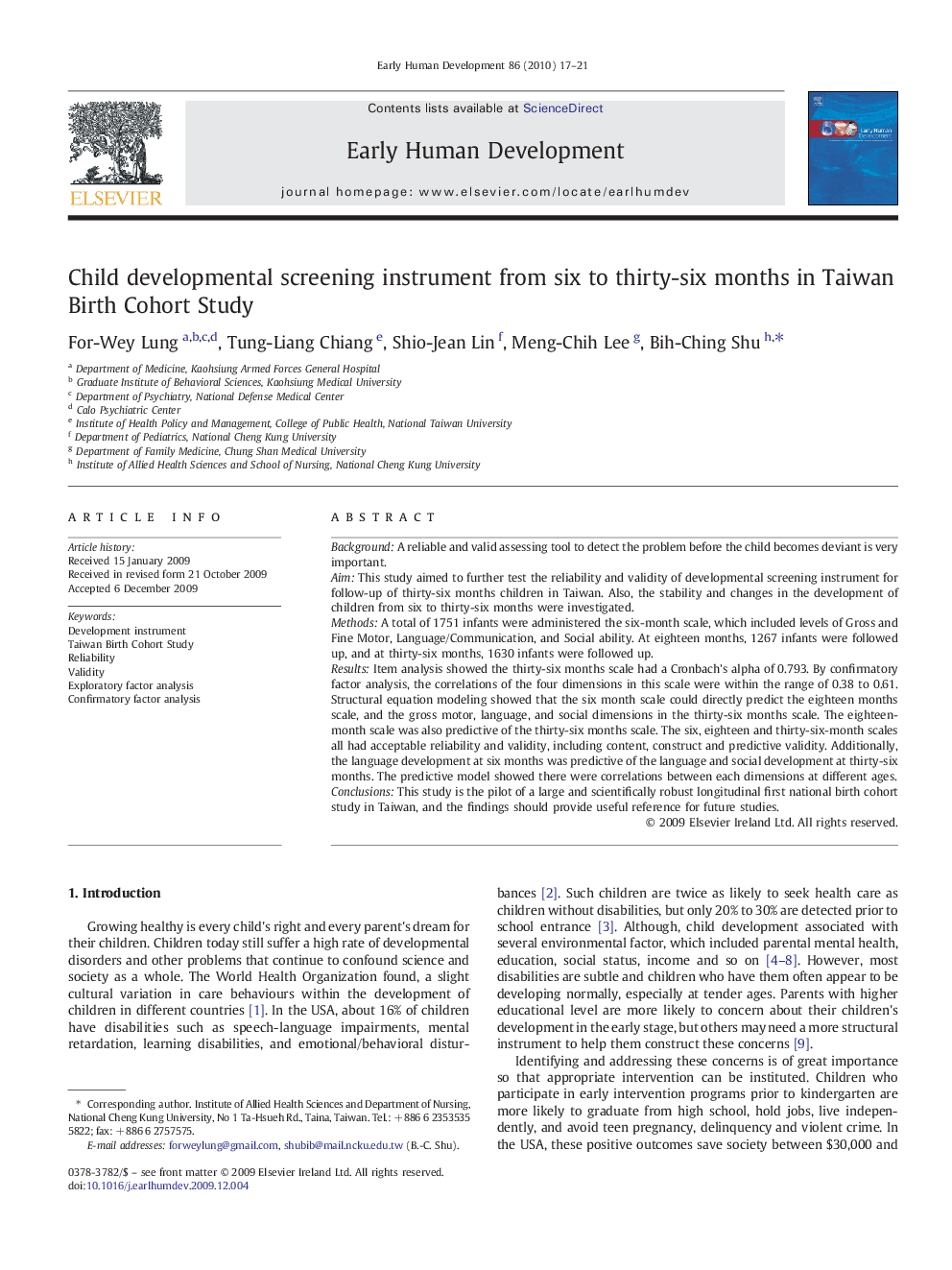| Article ID | Journal | Published Year | Pages | File Type |
|---|---|---|---|---|
| 3918472 | Early Human Development | 2010 | 5 Pages |
BackgroundA reliable and valid assessing tool to detect the problem before the child becomes deviant is very important.AimThis study aimed to further test the reliability and validity of developmental screening instrument for follow-up of thirty-six months children in Taiwan. Also, the stability and changes in the development of children from six to thirty-six months were investigated.MethodsA total of 1751 infants were administered the six-month scale, which included levels of Gross and Fine Motor, Language/Communication, and Social ability. At eighteen months, 1267 infants were followed up, and at thirty-six months, 1630 infants were followed up.ResultsItem analysis showed the thirty-six months scale had a Cronbach's alpha of 0.793. By confirmatory factor analysis, the correlations of the four dimensions in this scale were within the range of 0.38 to 0.61. Structural equation modeling showed that the six month scale could directly predict the eighteen months scale, and the gross motor, language, and social dimensions in the thirty-six months scale. The eighteen-month scale was also predictive of the thirty-six months scale. The six, eighteen and thirty-six-month scales all had acceptable reliability and validity, including content, construct and predictive validity. Additionally, the language development at six months was predictive of the language and social development at thirty-six months. The predictive model showed there were correlations between each dimensions at different ages.ConclusionsThis study is the pilot of a large and scientifically robust longitudinal first national birth cohort study in Taiwan, and the findings should provide useful reference for future studies.
